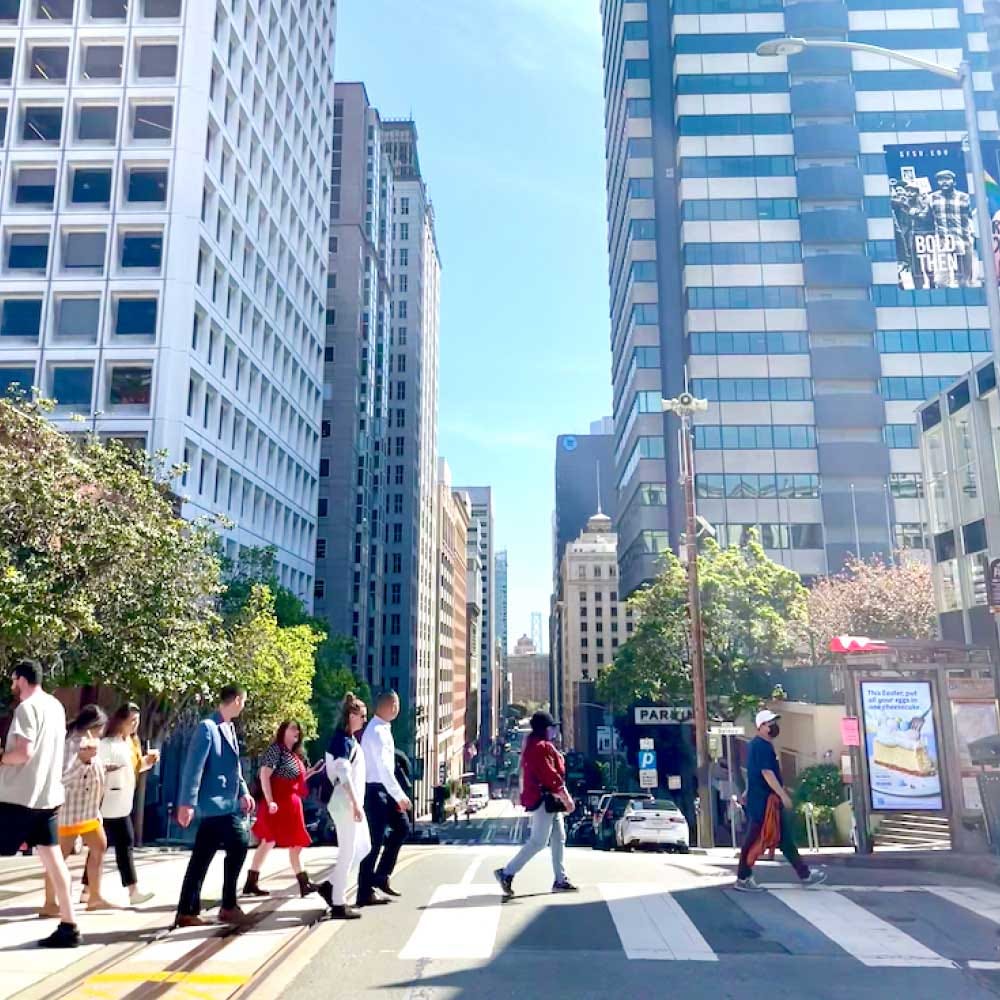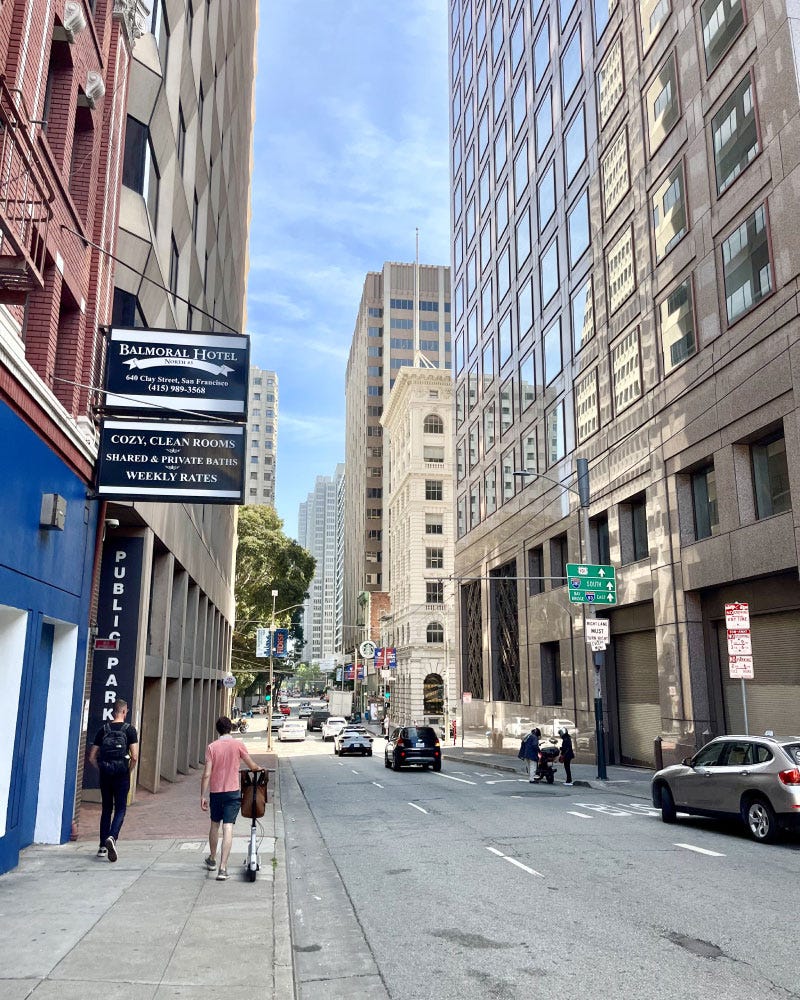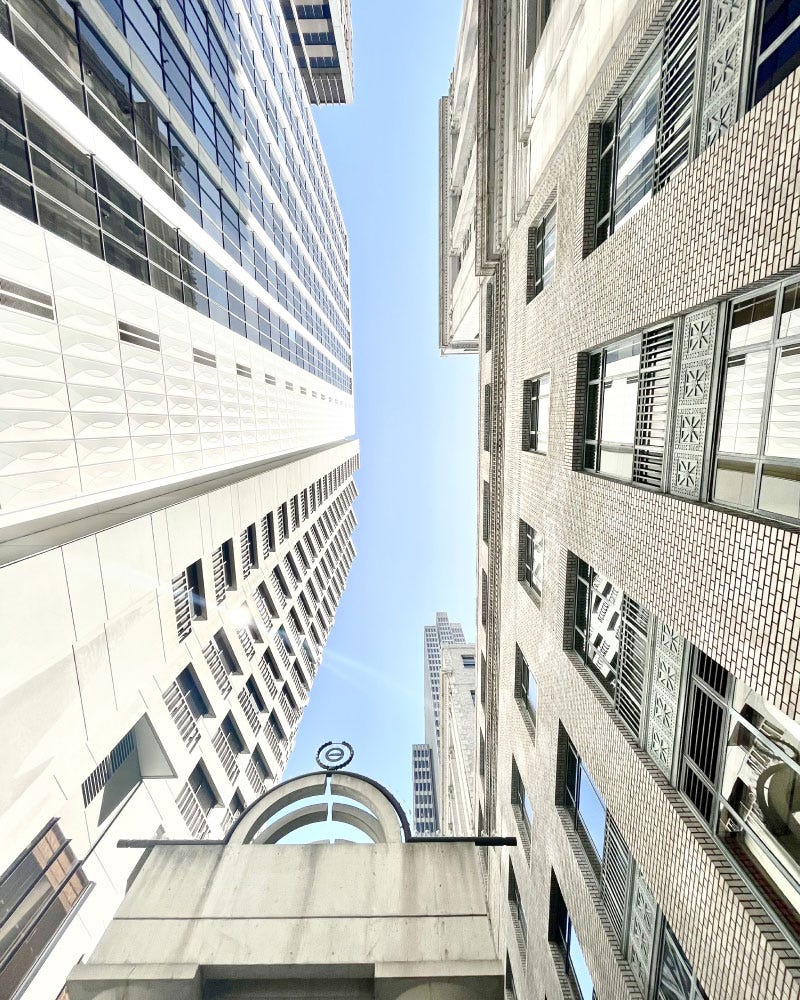San Francisco's Downtown
From the legend of Alma to the buried ships: don't miss this article on some of the city's most interesting secrets!
08 April ‘22
Downtown
The Story of Alma de Bretteville
Our tour started at Union Square, where there's a statue "honoring" Alma de Bretteville, known as the "Great Grandmother of San Francisco" from the 19th and early 20th century. According to legend, Alma was a young woman from a non-wealthy family who married a much older and wealthy man, Adolph Spreckels. She affectionately referred to him as "my sugar daddy", which is where the term originated. Despite her education and cultural background, their union was not initially accepted by high society due to Alma's lower socioeconomic status. To gain acceptance, she turned to art collecting and traveled to Paris to purchase popular pieces and bring them back to San Francisco.
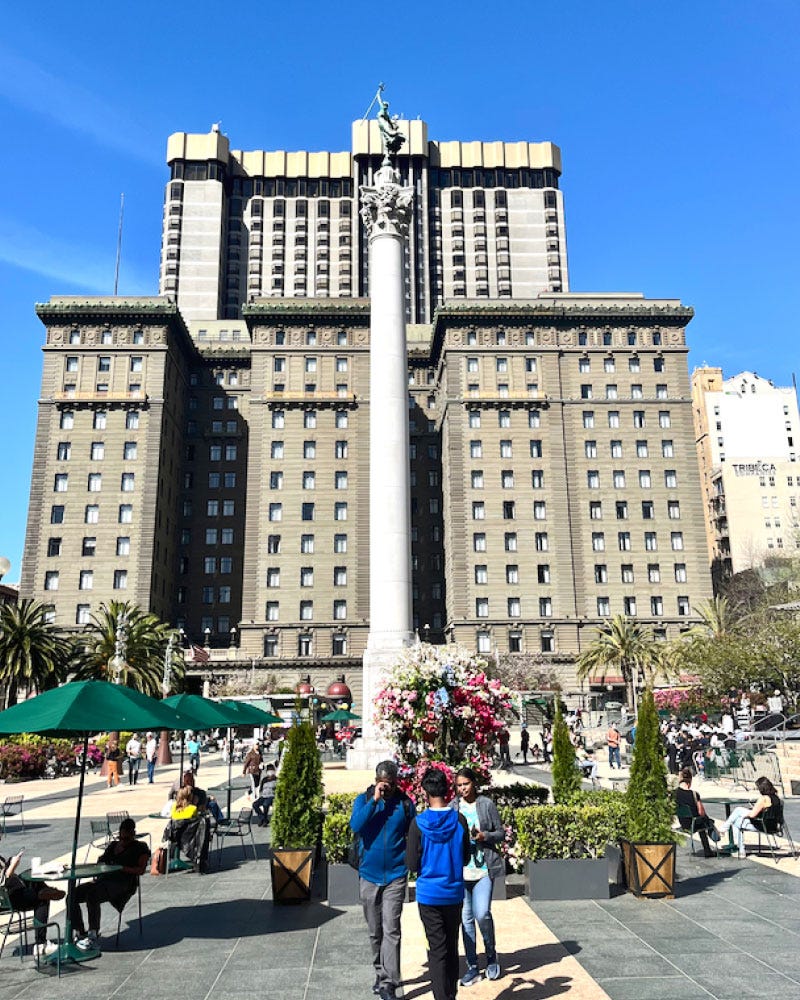
The legend goes on to say that while in Paris, she also discovered the existence of red-light houses and convinced several prostitutes to come to San Francisco with her, promising them a comfortable life with wealthy men. It is significant to mention that, at the time, San Francisco had a male-dominated population, mostly made up of people who had come for the gold rush. While some claim that Alma also played a role in shaping the architectural aspects of San Francisco, historical evidence only confirms that she was a prominent figure in high society known for her philanthropy and cultural pursuits. The rest, however, is likely to be largely legend.
From Union Square to the Dark Streets
From the square, we headed towards one of the most expensive streets in San Francisco. The street is now beautiful, but in the past it was known to be quite dangerous. Many gold seekers who arrived in the city were known to be quite lost because they did not know how to orient themselves. Some gold seekers fell into the trap of dangerous kidnappers and were sold as sailors. This is how the deception and kidnapping took place: these men who had come to look for gold didn't know how to orient themselves, and when they met "gentlemen" who were willing to help them find their way, they accepted their help happily. These "gentlemen" welcomed them in their "hotels" and showed them maps and how to move around. Once the victim began to trust them, they were drugged or stunned and then taken through a hatch and sold to people who took them to faraway lands as sailors.
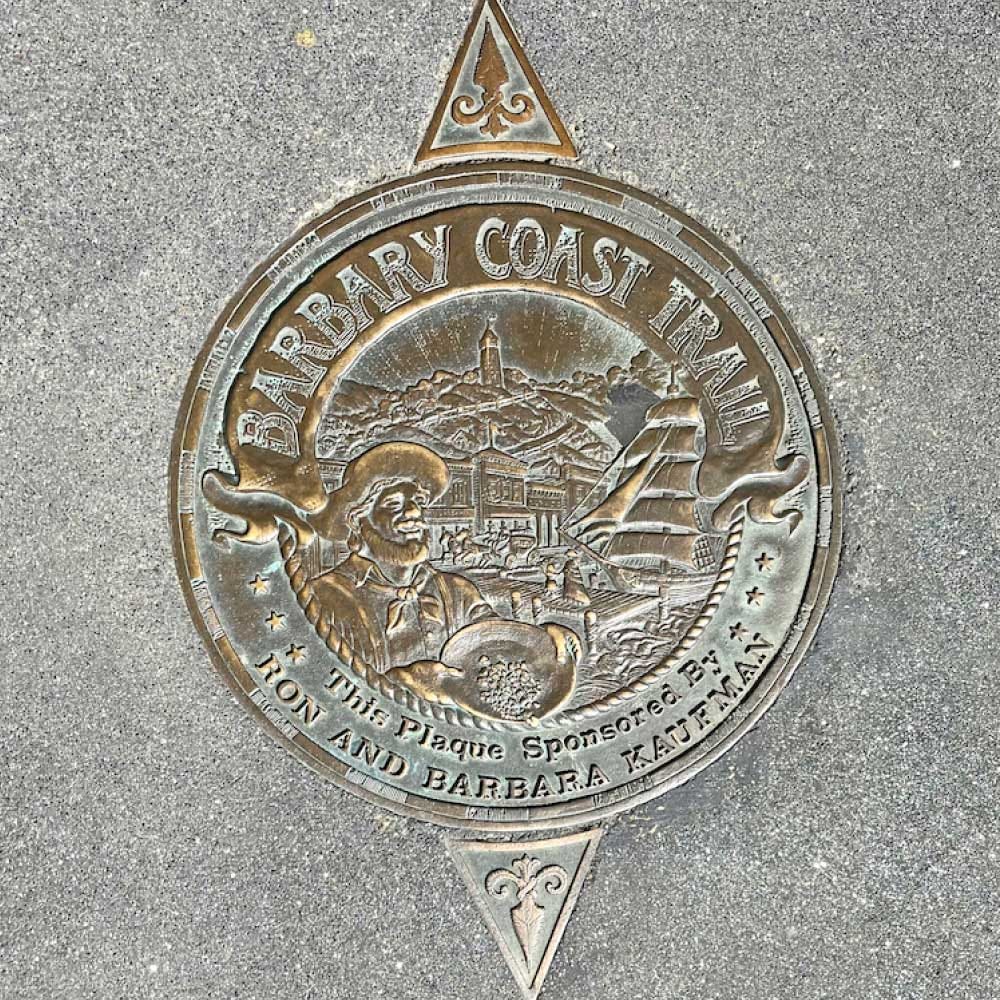
The Financial District
The Financial District of San Francisco is a neighborhood that's home to many of the city's financial institutions like banks and investment companies. It's located in the northeastern part of the city, close to the waterfront, and you'll notice that the buildings here are mostly tall skyscrapers, which is quite different from other neighborhoods like Chinatown. But did you know that just a few decades ago, the area at the foot of Market Street used to be a shallow water body called Yerba Buena Cove? The shoreline even extended inland where the iconic Transamerica Pyramid stands today.
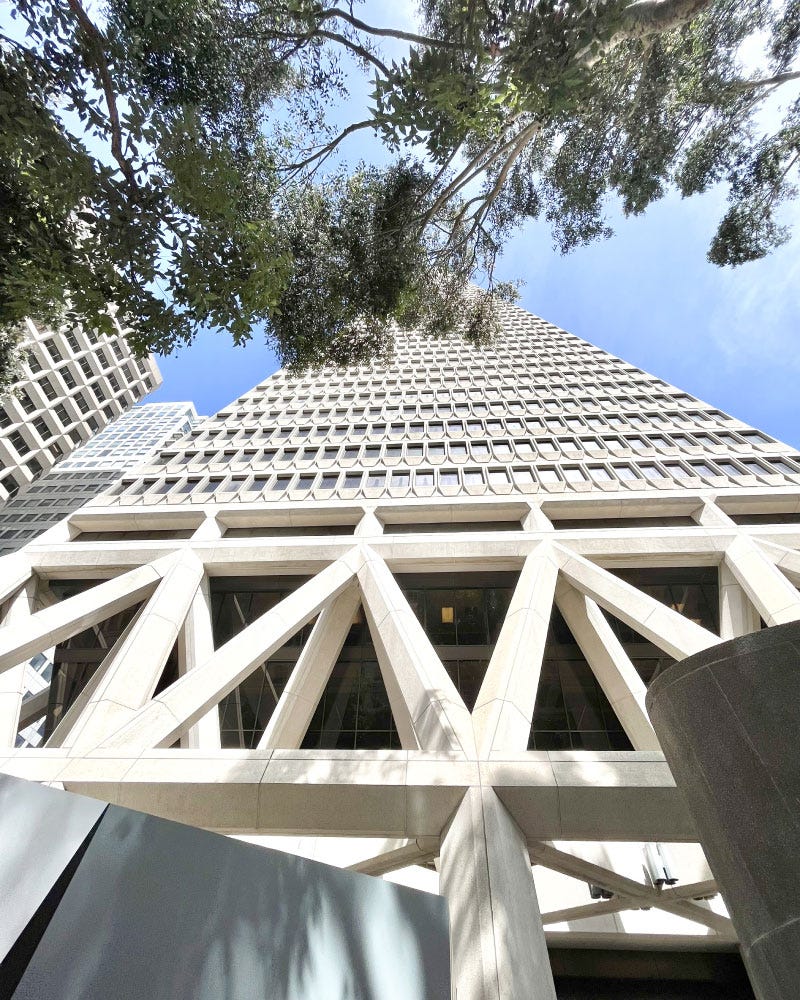
The Abandoned Boats of the California Gold Rush
During the gold rush, many people were eager to reach California and all sorts of boats were put into service. But, when the ship captains arrived, they found no cargo or passengers waiting to justify a return trip. Plus, they and their crew also wanted to try their luck in the gold mines. The ships were not necessarily abandoned, but they started to deteriorate over time. Some people believe that the city of San Francisco created laws with loopholes to prevent the gold from leaving the city. These loopholes made it easier for people to sink their ships and claim the land beneath them. Our guide told us that 48 boats have been found beneath buildings in the Financial district, which is pretty cool to think about!
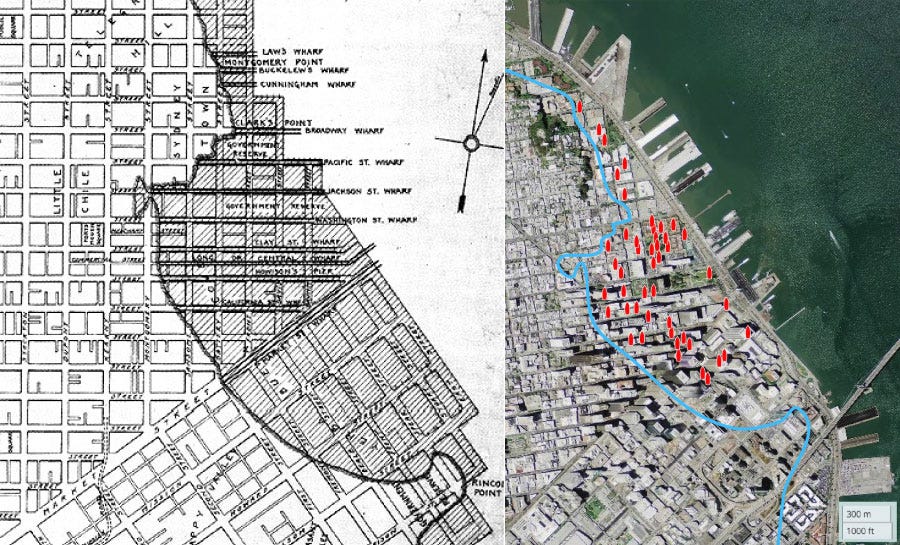
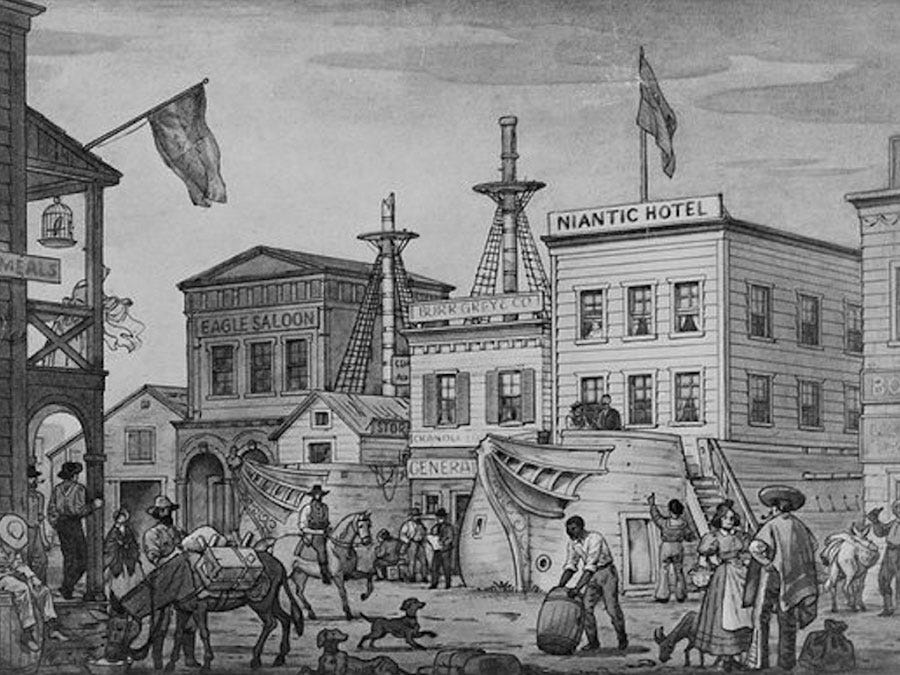
Rooftop Gardens and Public Spaces
San Francisco has laws that promote sustainable building practices and many buildings in the Financial District have incorporated green spaces such as nice rooftops or gardens as part of their design. These spaces are sometimes open to the public, so it's worth checking out next time you're in the area. It's a great way to experience the city! Unfortunately, I didn't have enough time to check it out myself.
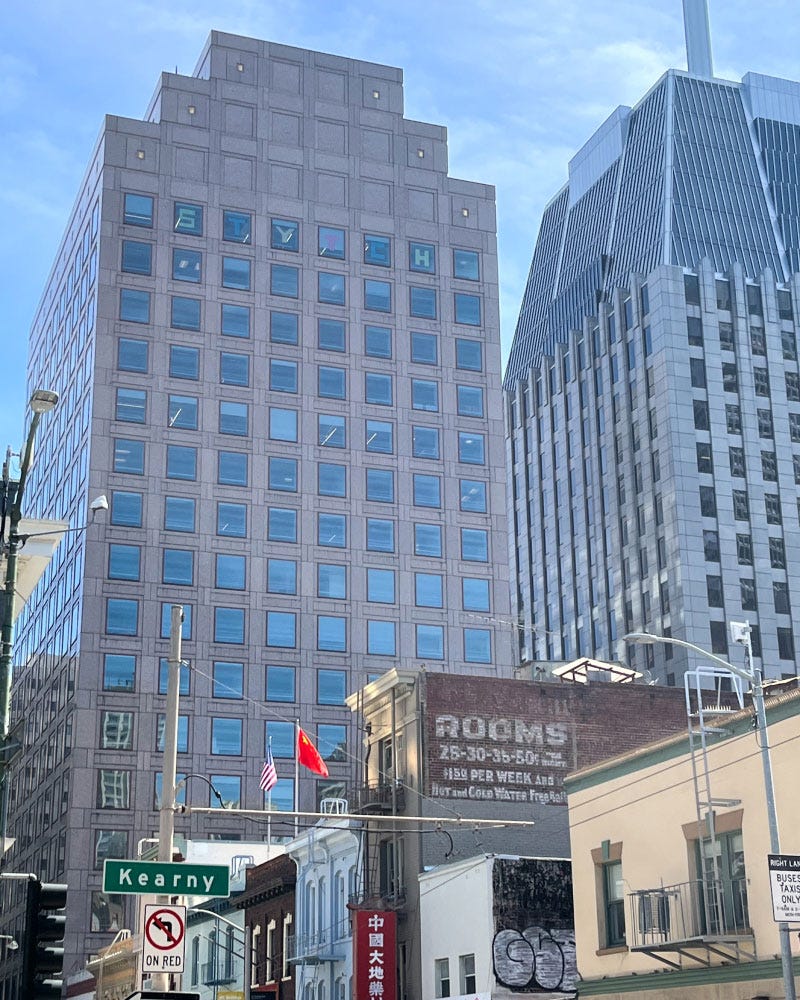
I just wanted to point out that the information I've shared with you so far are a small summary of the free walking tour that I joined, SF Tour!! I highly recommend it! Even though some of the stories may be fictionalized, they add a fun and interesting perspective to the history of San Francisco. The tour guide was so enthusiastic and passionate about the stories he was telling, that it was really engaging. By the end of the tour, you'll find yourself envisioning yourself walking through the streets of San Francisco during the 19th and 20th century.




